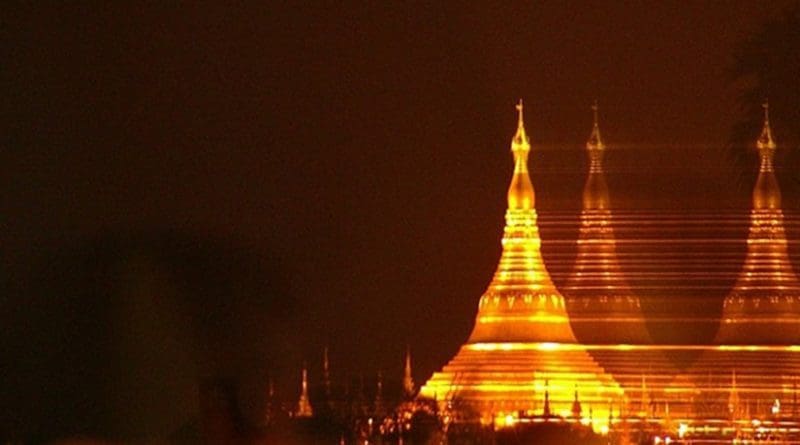Second 21CPC And Myanmar’s Stuttering Peace Process – Analysis
By IPCS
By Angshuman Choudhury*
On 28 May 2017, the second iteration of Myanmar’s flagship Union Peace Conference, or the 21st Century Panglong Conference (21CPC), concluded. Held after a delay of almost three months, the six-day long multi-stakeholder conference was marked by three critical developments in the peace process: dismissal of the Panglong forum by a powerful group of non-signatories to the ceasefire; ‘secession’ re-emerging as a divider amongst stakeholders; and China’s definitive role in the dialogue process.
Mixed Participation
The second 21CPC witnessed the participation of all Ethnic Armed Organisations (EAOs) signatory to the Nationwide Ceasefire Accord (NCA); seven non-signatory EAOs part of the ‘Northern Alliance’ (NA); political parties; the Tatmadaw (Myanmar’s military); civil society; and civilian clusters from the union government.
However, members of the crucial non-signatory ethnic group, the United Nationalities Federal Council (UNFC), refused to participate, arguing that the “Specially Invited Persons” status accorded to them by the union government was largely non-substantive. The absence of the group was unusual and unforeseen given its previous compliance of the NCA-led process.
However, members of the NA met State Counsellor (SC) Daw Aung San Suu Kyi at her residence privately. Led by the China-backed United Wa State Army (UWSA), all NA member EAOs have already veered away from the NCA to initiate a new dialogue committee called the Federal Political Negotiation and Consultative Committee (FPNCC). Hence, their presence in Nay Pyi Taw was significant, as it might lead to fresh dialogue. However, the SC, by giving exclusive audience to the NA, risks drawing the ire of other EAOs, particularly the NCA signatories.
Issues: Breakthroughs and Deadlocks
The key issues discussed at the 21CPC fell under the following broad themes: politics, security, economics, social issues, and land and natural resources. These issues were disbursed through a 45-point agenda that was pre-approved by the conference’s apex organising body, the Union Peace Dialogue Joint Committee (UPDJC).
Of the total points, 37 were agreed upon by joint consensus, including 12 (out of 22) political items. All other points under non-political and non-security themes, reserved for deliberation solely between the government and signatories, were agreed upon by consensus.
However, there was a severe impasse over one key issue, i.e. ‘secession’, wherein several EAOs and ethnic parties – particularly the Shan Nationalities League for Democracy and the Mon National Party – objected to the addition of the “no right to secede” clause in the final agreement by military parliamentarians.
The unwarranted addition could be a result of the military’s perception that greater federalism could ultimately lead to a breakup of the union. However, it drew the ire of both signatory and non-signatory EAOs who felt that the term was an open threat to ethnic groups and that it overturned the spirit of the 1947 Panglong Agreement, which includes the “right to secede.”
Given the historical baggage behind the term and its polarising context, the inclusion of the term was bound to distance certain groups from the peace process. Nay Pyi Taw seems to have planted a new seed of suspicion in the minds of its ethnic allies, something that can be a spoiler in the longer term.
The other crucial point on which progress could not be made was on the creation of a federal army. While the Tatmadaw proposed the idea of ‘one federal army’, the ethnic groups argued for a multi-ethnic armed force made out of disarmed EAO combatants. Given the stark multiplicity of ethnic constituencies in Myanmar and their general suspicion of the Bamar-dominated Tatmadaw, the union government would find it difficult to retain the current structure of the armed forces in a post-ceasefire environment.
China’s Role
However, it is China’s decisive role in Myanmar’s peace process that that unraveled the second 21CPC like never before.
The northern groups participated in the conference without signing the NCA or the Deed of Commitment (DoC) solely due to mediation by China. Two days before the conference, the Chinese foreign ministry’s special envoy on Asian affairs, Sun Guoxiang, met Suu Kyi and the Commander-in-Chief of the Tatmadaw. Subsequently, all seven northern groups were flown into Nay Pyi Taw from the south Chinese city of Kunming on a chartered plane.
Clearly, without Chinese mediation, the NA members would not have been permitted to even step in to the capital, let alone participate in the conference. This is mostly because there is no effective ceasefire between them and the government. Furthermore, the groups themselves would have stayed away given the Tatmadaw’s relentlessly hostile posture and the demand to sign the DoC.
For Nay Pyi Taw, China’s growing role in the peace process could serve as a stabilising factor in the immediate context. However, in the long run, it could create new conflict dynamics and political interests that Myanmar’s union government would find hard to manage. At present, however, Beijing’s core interests lay in ensuring a peaceful Sino-Myanmar border for smoother flow of investments.
In conclusion, the second 21CPC ended eventfully. While equal participation of all EAOs continues to remain on stand-by, the point over non-secession has now thrown up a new bone of contention. Both elements underline the fundamental split between the civilian and military clusters in Myanmar’s government. Nay Pyi Taw must urgently address these in order to reach a meaningful negotiated settlement.
* Angshuman Choudhury
Researcher, SEARP, IPCS
E-mail: [email protected]

